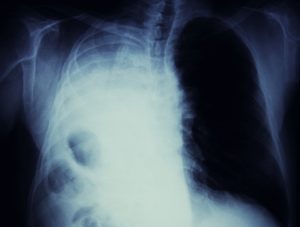Extensive examination of lymph nodes and node stations appeared to be crucial to predicting accurate staging and survival outcomes in patients with pure-solid, non-small cell lung cancer (NSCLC) who underwent lobectomy and ipsilateral lymphadenectomy, according to the results of a study published in the Journal of the National Comprehensive Cancer Network.

Researchers identified a threshold of 18 lymph nodes and 6 node stations as the ideal for evaluating the quality of lymph node examination in patients with clinical stage I-II NSCLC presenting as pure-solid tumors.
To reach this conclusion, they used data from 1205 patients across 6 institutions in China. The number of examined lymph nodes was an independent prognostic factor for overall survival (OS) (hazard ratio [HR]=0.950; 95% CI, 0.917-0.983; P =.004) and recurrence-free survival (RFS) (HR=0.960; 95% CI, 0.942-0.962; P <.001). Similarly, the number of examined node stations was also prognostic for OS (0.690; 95% CI, 0.597-0.797; P <.001) and RFS (HR=0.859; 95% CI, 0.793-0.931; P <.001).
The researchers showed that examined lymph nodes and nodal stations were also independent predictors of postoperative nodal upstaging (lymph nodes odds ratio [OR]=1.186; 95% CI, 1.148-1.226; P <.001; node stations OR=1.057; 95% CI, 1.002-1.187; P =.004).
Based on these results, the researchers recommended that “…more extensive lymphadenectomy should be performed in patients with pure-solid NSCLC in case of occult lymph node metastasis.”
Reference
Chen D, Mao Y, Wen J, et al. Impact of the extent of lymph node dissection on precise staging and survival in clinical I-II pure-solid lung cancer undergoing lobectomy. J Natl Compr Canc Netw. 2021;19:393-401. doi:10.6004/jnccn.2020.7635
